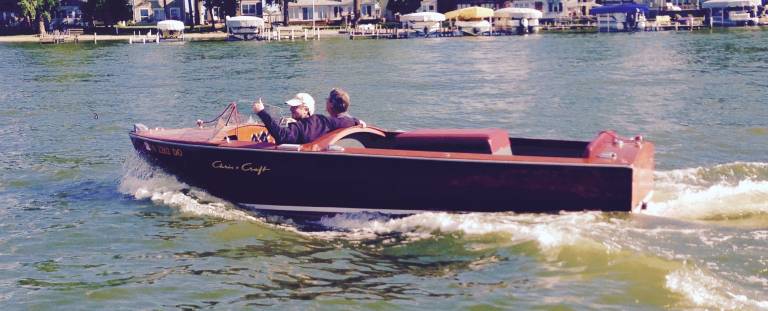This weekend is the  Fourth of July holiday in the United States and, admittedly, my favorite holiday of the year. Growing up it was a holiday spent with cousins at the parade, going tubing and water-skiing and completing the day with fireworks over the lake, which we would watch from the dock while eating s’mores. Idyllic. Today, things are pretty much the same, with the addition of a few political candidates roaming around trying to make connections before the upcoming caucuses, and a trip to Farmers Beach on the boat to take in the scene. What does this have to do with public health, and especially, global health? Well besides the obvious of delicious high caloric food, (ir)rational use of chilled beverages and fireworks safety, one thing that does scare me about the 4th of July holiday is boat safety and drowning.
Fourth of July holiday in the United States and, admittedly, my favorite holiday of the year. Growing up it was a holiday spent with cousins at the parade, going tubing and water-skiing and completing the day with fireworks over the lake, which we would watch from the dock while eating s’mores. Idyllic. Today, things are pretty much the same, with the addition of a few political candidates roaming around trying to make connections before the upcoming caucuses, and a trip to Farmers Beach on the boat to take in the scene. What does this have to do with public health, and especially, global health? Well besides the obvious of delicious high caloric food, (ir)rational use of chilled beverages and fireworks safety, one thing that does scare me about the 4th of July holiday is boat safety and drowning.
As WHO pointed out in its first ever report on drowning, “[a]larmingly, drowning is among the 10 leading causes of death of children and you people in every region of the world, with children under 5 years disproportionately at risk and males twice as likely to drown as females.” (WHO, Global Report on Drowning: Preventing a leading Killer (2014) (“WHO Report”)). Drowning is the world’s third leading unintentional injury killer. Key risk factors for drowning include lack of barriers controlling exposure to water bodies, poor swim skills, low awareness of water dangers, and high-risk behavior, including consuming alcohol while engaging with water. (WHO Report)
The Report issued ten recommendations to globally reduce the burden of drowning. One of these interventions is to adopt and enforce effective safe boating, shipping and ferry laws and regulations.
For example, one law could be to require all recreational boating vessels (e.g. pontoons, Hobie Cats and Chris Crafts) to carry one wearable personal flotation device (lifejacket) for each person on board. The U.S. Coast Guard found that up to 50% of recreational boating drowning deaths may be prevented by wearing appropriate life jackets. (WHO Report) Further, a retrospective analysis of Australian regulations mandating wearing lifejackets while on recreational boats found not only a significant increase in adherence for wearing a lifejacket but also a three-fold reduction in drowning deaths among all recreational boaters. Another example of potentially effective laws and regulations are ones regarding operating a recreational vehicle while consuming alcohol. Just as drunk driving is dangerous and a crime – drunken pontoon driving is also dangerous.
I hate to be a Debbie Downer, especially regarding my favorite holiday of the year, but boating safety should be a serious consideration when enjoying the 4th of July holiday at the lake. At a minimum, please make sure you have a sober driver, life jackets, throw cushions, charged cell phone or method to call to shore for help, toe rope or painter, lights for the boat when operating at night, an understanding of right-of-way and wake zone rules, and that all parties participating in water sports understand the hand signal to communicate they are okay after they come crashing off the tube or wipe out skiing.
Most importantly – have a safe, fun and happy 4th of July!
Latest
India and the IHR Amendments: Strengthening Legal Preparedness for Global Health Security
Kashish Aneja Lawrence O. Gostin Sam Halabi



